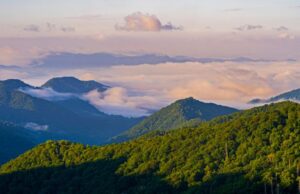
The Smoky Mountains in Tennessee are one of the most iconic and picturesque destinations in the United States. Nestled between North Carolina and Tennessee, this mountain range is a must-visit for nature enthusiasts, adventure seekers, and anyone looking for a relaxing and scenic getaway.
One of the top reasons to visit the Smoky Mountains is the abundance of natural beauty. The Smokies offer a breathtaking panorama that is hard to find anywhere else with its stunning views of rolling green hills, thick forests, and sparkling streams.
One of the must-see attractions within the Smoky Mountains is Cades Cove. This picturesque valley is surrounded by a mountain range and features an array of historic buildings and breathtaking scenery. It is the perfect place to take a scenic drive or leisurely bike ride and spot some of the area’s wildlife such as deer, black bears, and turkeys.
For those looking to explore the mountains on foot, the Smokies have a vast network of hiking trails that cater to all fitness levels. From easy strolls to challenging treks, there is something for everyone. Popular hiking destinations include Charlies Bunion, Chimney Tops, and Mount LeConte, which offers stunning views of the surrounding mountains and valleys.
Fall is the perfect time to visit the Smokies, as the mountains are alive with vibrant colors. The changing of the leaves creates a stunning display of red, orange, and yellow, making it an ideal destination for photographers and nature enthusiasts. The Great Smoky Mountains National Park offers several scenic drives, including the Blue Ridge Parkway and the Foothills Parkway, where you can witness the fall foliage at its peak.
The Smoky Mountains also boast some of the most scenic driving roads in the country. The Tail of the Dragon is a popular route with 318 curves in just 11 miles, making it a must-visit for any driving enthusiast. The scenic drives through the Great Smoky Mountains National Park also offer stunning views of the surrounding mountains and valleys.
A visit to the Smoky Mountains in Tennessee is an experience that should not be missed. From the breathtaking views and abundant outdoor activities to the unique cultural and historical attractions, there is something for everyone in this charming mountain range.